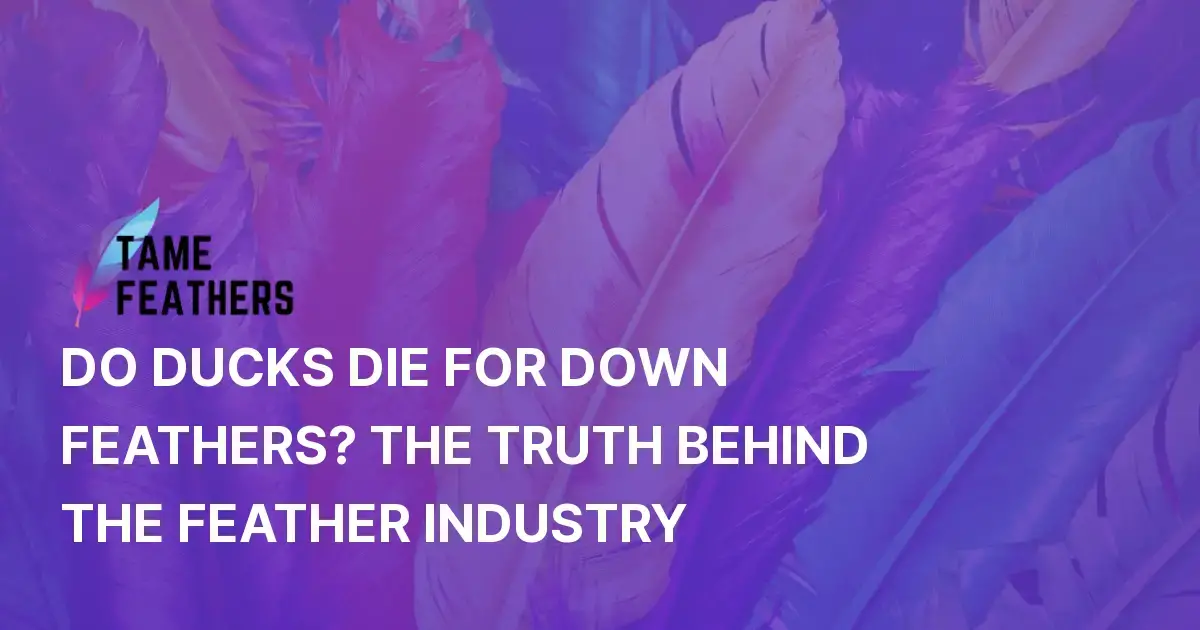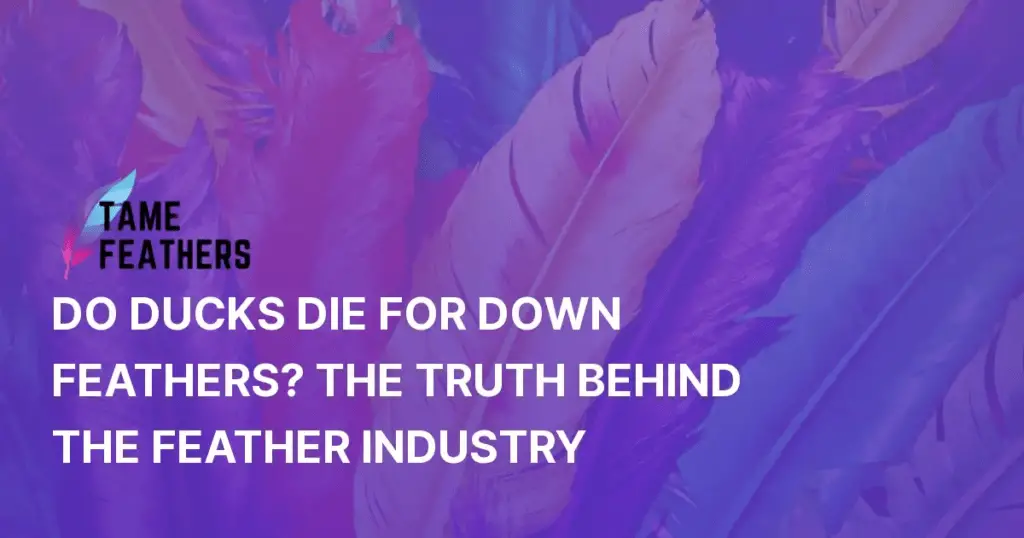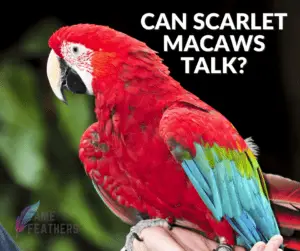Do Ducks Die for Down Feathers?
It’s a common question among those concerned about animal welfare: do ducks die specifically for their down feathers?
The answer is both yes and no. In some cases, ducks are raised solely for their meat, with the down feathers being collected as a byproduct during slaughter.
However, in other instances, ducks may be live-plucked or might suffer injuries during the collection process that ultimately result in death. This blog post will delve deeper into how down feathers are harvested from ducks and discuss ethical concerns surrounding these practices.

- Understanding Down Feathers: Composition, Uses, and Value
- The Plucking Process: How Down Feathers Are Commonly Removed from Ducks
- Live-Plucking Vs. Post-Mortem Harvesting of Down Feathers
- Down Feather Industry Standards: Certifications and Their Requirements
- Animal Welfare Laws Governing the Down Feather Industry
- Alternatives to Duck Down Feathers in Insulation Products
- Synthetic Materials Vs. Natural Duck Down Insulation Performance Comparison
- Ethical Consumer Choices for Choosing Insulated Goods with Minimal Animal Impact
- Leading Brands in Ethically Sourced Duck Down Products
As consumers become increasingly conscious about the ethical implications of their purchases, it’s essential to understand what goes into making products like down-filled jackets, bedding, and other insulated goods. Do ducks die for their highly prized down feathers?
The truth behind the feather industry is far from black and white. In this post, we’ll dive deep into how down feathers are sourced, discuss industry standards in regards to animal welfare, and explore some ethical alternatives to duck down insulation.
Understanding Down Feathers: Composition, Uses, and Value
Down feathers, found beneath the outer layer of waterfowl like ducks and geese, serve as a natural insulator for these animals.
These soft, fluffy fibers are highly sought after in various industries because they possess excellent thermal insulation properties without adding significant weight. Products such as jackets, sleeping bags, pillows, and comforters often use duck or goose-down insulation.
However desirable down may be for its insulating qualities; it’s essential to understand that sourcing these materials comes with some significant ethical concerns. The methods utilized in obtaining down can be harmful to the animals involved if not adequately regulated or performed humanely.
The Plucking Process: How Down Feathers Are Commonly Removed from Ducks
There are several common methods in which ducks would undergo feather plucking:
• Molting: During molting season (when birds naturally shed old feathers), farmers might gather the fallen down feathers without causing harm.
• Labor-demanding mechanical plucking: Rather than waiting around for those opportune moments during molt season this method forcibly removes both outer feathers.
It’s critical to recognize that despite consumer may have a limited option when buying products filled with down feathers. Ethical sourcing is possible if one is informed about the various methods and industry certifications.
Live-Plucking Vs. Post-Mortem Harvesting of Down Feathers
There has been significant debate around live-plucking of ducks and geese compared to post-mortem harvesting, typically done after slaughtering the birds for their meat.
Live-plucking involves removing feathers from a living bird, which can be incredibly painful and stressful for the animal. This method often leads to injuries like torn skin, bruising, or open wounds that may become infected.
Live-plucked birds repeatedly undergo this process multiple times before being euthanized or slaughtered for another purpose (such as meat production). Many sources assert that as much as 50%-80% of all global down volume might come from practicing live pluck.
Post-mortem harvesting, on the other hand, occurs after slaughter when the bird’s body has already been used for meat production purposes like that of a farmed duck or goose. Farmers use carcasses to extract leftover down without causing additional harm in animals during removal; hence some consider it a more ethical method.
Down Feather Industry Standards: Certifications and Their Requirements
Responsible consumers often look for certification labels on products to ensure they’re making ethical choices when purchasing goods containing down feathers. Three main certifications widely recognized in the industry include:
• The Responsible Down Standard (RDS): This certification requires that ducks must not be live-plucked or force-fed during their lifetime but allows them to be tube-fed cornmeal instead.
• The Global Traceable Down Standard (Global TDS): With an emphasis on traceability throughout supply chains, this standard prohibits both force-feeding & live-plucking strictly forbids sourcing any material.
• The Downpass Standard: In addition to prohibiting live-plucking and force-feeding, this standard requires that down must come only from post-mortem slaughter processes with detailed documentation in place.
Animal Welfare Laws Governing the Down Feather Industry
As consumer awareness for animal welfare advances, countries around the world are implementing various degrees of animal protection laws. In the United States, the Federal Trade Commission (FTC) holds companies accountable for accurate advertising of products, but there are no federal regulations prohibiting live-plucking or force-feeding.
However, some states enacted their own laws addressing these issues. For example, California bans sale or production of foie gras from force-fed ducks.
In Europe, legislation governing down harvesting is more stringent. European Union law prohibits live-plucking in all its 28 member states; however it is also known that due to differing interpretations and inconsistent enforcement around the network situations where pluck takes place can vary significantly country-by-country and from farm-to-farm within those borders.
Alternatives to Duck Down Feathers in Insulation Products
If you’re concerned about the ethical implications of using duck down feathers in your insulated products but still want a warm layer or comfortable bedding, several alternatives exist:
• Synthetic insulation materials, such as Thinsulate™ or PrimaLoft®
• Natural non-animal insulation options, like wool from ethically sourced sheep farms.
Synthetic Materials Vs. Natural Duck Down Insulation Performance Comparison
While synthetic materials have come a long way in replicating duck down’s insulating properties, there remain some differences between natural and synthetic down:
Natural duck down:
– Superior insulation to weight ratio
– Highly compressible
– Excellent breathability, allowing moisture to escape
Synthetic insulation:
– More cost-effective
– Retains warmth when wet, unlike natural down
– Easier to wash and maintain
Ethical Consumer Choices for Choosing Insulated Goods with Minimal Animal Impact
As a responsible consumer who wants to minimize animal suffering but still needs insulated goods for comfort and utility, there are a few essential steps you can take:
1. Research industry certifications and animal welfare standards associated with down feather products.
2. Choose products that meet or exceed these ethical certifications.
3. Consider synthetic alternatives or materials with less impactful sourcing processes.
Leading Brands in Ethically Sourced Duck Down Products
Several companies have made strides in committing to ethically sourced duck down materials:
• Patagonia: This outdoor apparel company utilizes only 100% traceable duck & goose down feathers while continually researching alternatives.
• REI Co-op: Like social activism brand Patagonia at their core REI takes pride in material sourcing being RDS certified yet continues searching out new artificial insulation technologies every day so customers can have choice when shopping us store shelves wondering what best options lie waiting comparison shop today next adventure gear?
Armed with the knowledge of the feather industry practices and equipped with a mindset geared towards ethical consumerism, you are now better prepared to make informed decisions when purchasing insulated goods.
With numerous reputable brands caring about animal welfare and offering responsible alternatives, it is entirely possible (and practical) for consumers to choose products that align with their values while still enjoying the benefits of warm layers or comfortable bedding solutions.



